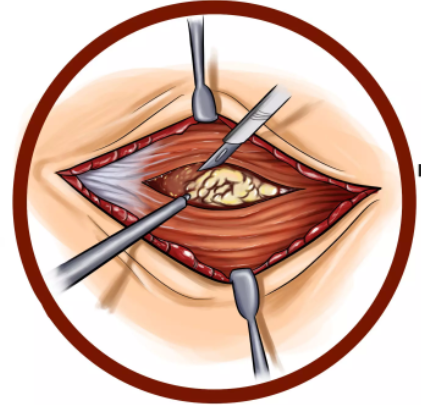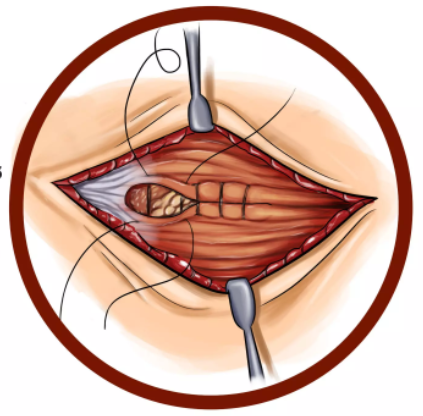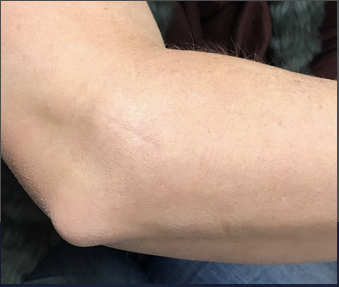Tennis Elbow and Golfer's Elbow Surgery
Your Diagnosis
Tennis elbow hurts on the outside of the elbow. Golfer’s elbow hurts on the inside of the elbow. In medical terms, tennis elbow is called either partial tearing of the common extensor tendon or lateral epicondylitis. Golfer’s elbow is called either partial tearing of the common flexor tendon or medial epicondylitis. They are both partial tears of an elbow tendon. Tennis elbow and Golfer’s elbow are both quite common. They are both treated in nearly the same way. If conservative (non-surgical) treatment does not help, then a person may consider surgery.
What happens during Surgery?
Surgery takes between 15 and 30 minutes. It is done with general anesthesia meaning the person is asleep. During surgery a roughly 1 inch incision is made over the painful spot on the elbow. The torn portion of the tendon is cleaned up. The underlying bone is drilled to bring in a new blood supply. A suture anchor is then placed in the bone and the tendon is repaired down to the bone.
Immediately after Surgery
The person will wake from surgery in the recovery room where they will spend 1 to 3 hours. Most people will then be allowed to go home when they are awake enough. The person will go home in a sling. The person cannot drive or take public transportation home. They must have a ride.
A person may have questions following your surgery. Many of these frequently asked questions surgery questions can be answered here.
Therapy after Surgery
After surgery the person may not use their hand for anything except for light things, such as typing, writing, eating, working a mouse, etc. The arm must remain in a sling and with a wrist immobilizer for 6 weeks. Sometimes people ask for a cast to help ensure they will not use the arm.
After 6 weeks of not using the arm, the person will begin a stretching and light weight- high repetition exercise therapy program.
What to expect after Surgery: week 0 through week 6 (Phase One)
- Pain: Right after surgery, the elbow will hurt. Pain is expected. The person will be given pain medications to go home with. The pain medications will help with the pain but will not remove the pain. By day 5 after surgery almost all people have stopped taking the pain medication. It is important to stop taking the pain medications because pain at the repair site is protective. People who continue to take the pain medications have a much greater chance of the surgery not working.
- Therapy: No formal therapy is usually done during this phase.
- Precautions: The arm is to be kept in a sling and a wrist immobilizer. This is to remind the person not to use the arm. The person may come out of the sling and immobilizer anytime they want but they should be careful not to use the arm while it’s out. Most people sleep with the sling and wrist immobilizer.
- Work: If a person returns to work they must follow the above precautions.
What to expect after Surgery: week 6 through week 12 (Phase Two)
- Pain: Pain is usually minimal by this point.
- Therapy: Therapy is started with a light weight high repetition exercise therapy program. Elbow and wrist stretching will also begin.
- Precautions: At this point the sling and the wrist immobilizer can be removed, and the person can use the arm for normal daily activities. The person must expect that the arm will be weak and should not engage in heavy lifting.
- Work: Many people with low demand jobs such as computer work will return to work at this point. Those people who do manual work such as construction should not return yet.
What to expect after Surgery: week 12 through 1 year and beyond (Phase Three)
- Pain: Most people have no pain.
- Therapy: Formal therapy has usually stopped but some people will continue to do exercises at home.
- Precautions: Usually there are no precautions by week 12.
- Work: Most people (even manual laborers) have returned to work.

An incision is made over the painful spot.

The tendon is repaired down to the bone.
